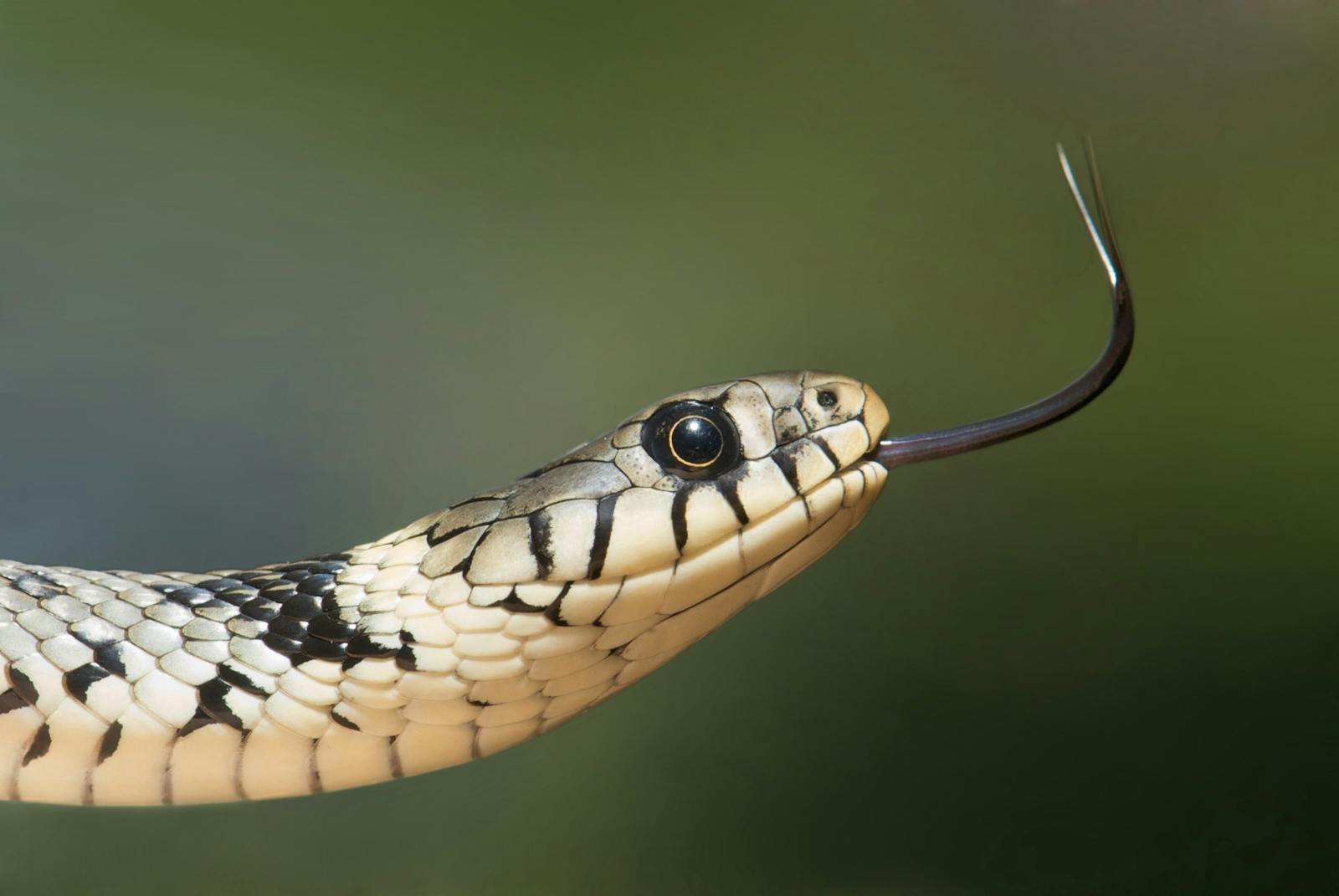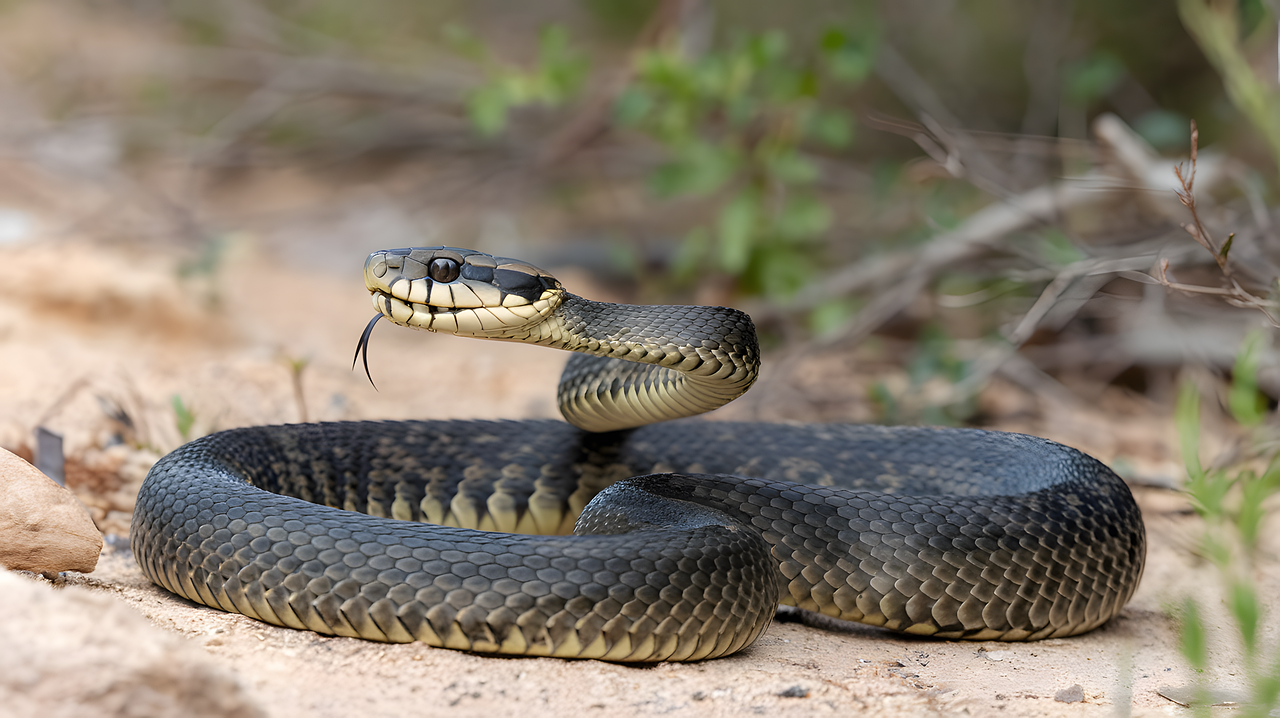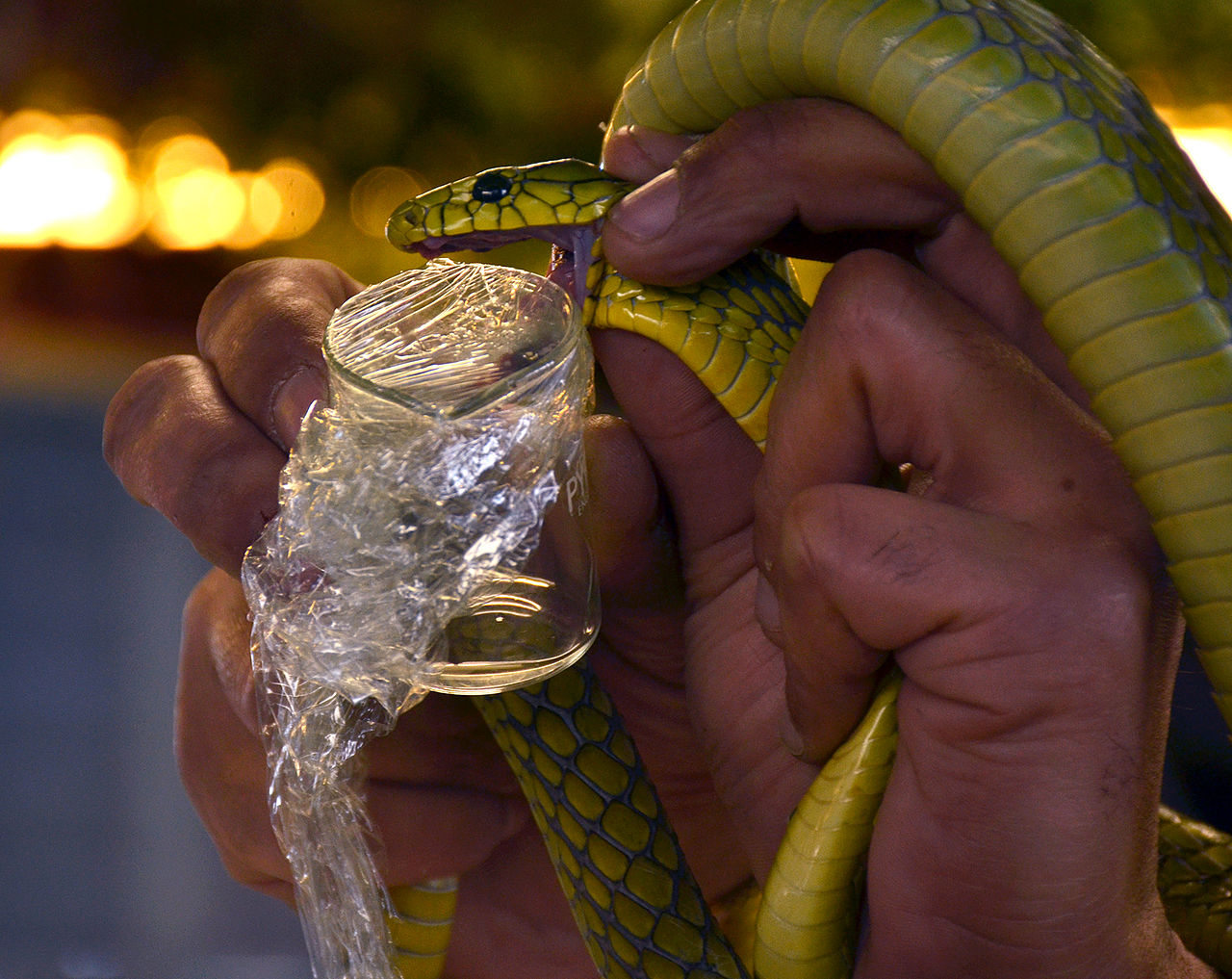In the world of animal adaptation, mimicry stands as one of the most fascinating evolutionary strategies. Among reptiles, few examples are as impressive as the non-venomous snakes that have developed the ability to mimic rattlesnakes – dangerous venomous predators feared by many animals and humans alike. The hognose snake, particularly the Eastern Hognose (Heterodon platirhinos), has mastered this deceptive art form, creating an illusion so convincing that it can send potential predators running in the opposite direction. This remarkable ability to imitate a more dangerous species offers these harmless serpents a survival advantage in the wild without the need to actually produce venom. Let’s explore this captivating example of nature’s ingenuity and discover how these harmless reptiles pull off such a convincing performance.
The Master of Deception: Meet the Eastern Hognose Snake

The Eastern Hognose snake (Heterodon platirhinos) is the primary non-venomous snake species known for its remarkable rattlesnake impersonation abilities. Native to eastern North America, this fascinating reptile typically grows to between 20-33 inches in length and displays a wide variety of color patterns, from solid brown or gray to more elaborate yellow, orange, or olive designs with dark blotches. The most distinctive physical feature of the hognose is its upturned snout, which resembles a pig’s nose and gives the snake its common name. This specialized nose adaptation helps the snake dig through soil and sand in search of toads, which make up the majority of its diet. Despite their intimidating defensive displays, hognose snakes are generally docile creatures that prefer to avoid confrontation whenever possible.
The Rattlesnake Mimicry Behavior Explained

When threatened, the Eastern Hognose snake launches into an impressive performance that mimics the warning behaviors of the feared rattlesnake. The snake will flatten its neck and the front portion of its body in a cobra-like manner, while simultaneously hissing loudly and aggressively striking (though rarely making contact). The most remarkable aspect of this performance is the snake’s ability to vibrate its tail rapidly against leaves or other debris on the forest floor, creating a buzzing sound remarkably similar to a rattlesnake’s warning. This multi-sensory deception is so convincing that even experienced naturalists have been momentarily fooled by the display. The mimicry works because potential predators have evolved to associate these specific visual and auditory cues with the dangerous rattlesnake, giving the harmless hognose snake a powerful survival advantage.
The Evolutionary Advantage of Batesian Mimicry

The hognose snake’s rattlesnake impersonation represents a classic example of Batesian mimicry, an evolutionary adaptation where a harmless species evolves to resemble a harmful one. This type of mimicry provides significant survival benefits, as predators who have previously had negative experiences with venomous rattlesnakes will avoid anything that looks or sounds similar. For the hognose snake, the ability to create a convincing rattlesnake impression means potential predators like hawks, foxes, and coyotes are more likely to seek easier, less threatening prey. The effectiveness of this mimicry depends on the presence of actual rattlesnakes within the ecosystem, as predators must learn to associate the warning behaviors with danger. Interestingly, this evolutionary strategy allows the hognose to allocate energy to other biological functions rather than developing actual venom, demonstrating nature’s efficiency in problem-solving.
Physical Characteristics That Aid in the Deception

While the hognose snake lacks the venomous capabilities and actual rattle of a true rattlesnake, it possesses several physical characteristics that enhance its mimicry performance. The snake’s ability to flatten its neck creates a broader, more intimidating profile that resembles the defensive posture of many venomous species. Many Eastern Hognose snakes have natural patterns of dark blotches on a lighter background that, when viewed quickly, can resemble the distinctive markings of rattlesnakes. The snake’s body is relatively thick and muscular, giving it a similar silhouette to the typically robust rattlesnake. Additionally, the hognose’s keeled scales (scales with a ridge down the middle) create a rough, textured appearance similar to that of many pit vipers, further enhancing the visual deception that helps keep predators at bay.
The Famous “Death-Feigning” Follow-Up Act

If the rattlesnake mimicry fails to deter a persistent predator, the hognose snake employs an even more dramatic second act in its defensive repertoire. In a behavior known as thanatosis or death-feigning, the snake will roll onto its back, open its mouth, let its tongue hang out, and may even release a foul-smelling musk while appearing completely lifeless. This elaborate performance can include convulsions and the regurgitation of food before the final “death” pose is assumed. The behavior is so convincing that the hognose has earned nicknames like “puff adder” and “play-dead snake” among locals throughout its range. This remarkable two-stage defense strategy—first intimidation through rattlesnake mimicry, then playing dead if threatened further—demonstrates the evolutionary sophistication of this harmless reptile’s survival mechanisms.
Other Snake Species That Mimic Rattlesnakes

While the Eastern Hognose is the most famous rattlesnake impersonator, several other non-venomous snake species have evolved similar mimicry behaviors. The Western Hognose Snake (Heterodon nasicus) and Southern Hognose Snake (Heterodon simus) employ comparable defensive tactics, including tail vibration and body flattening. The Gopher Snake (Pituophis catenifer), particularly in western North America, is known to mimic rattlesnakes through loud hissing, body inflation, and vigorous tail shaking when threatened. The Milk Snake (Lampropeltis triangulum) doesn’t typically engage in the vibratory behavior but has evolved color patterns that resemble those of venomous species in its range. The Fox Snake (Pantherophis vulpinus) is another accomplished mimic that vibrates its tail rapidly among dry leaves to create a convincing rattling sound, despite being completely harmless to humans.
Distinguishing Between Real Rattlesnakes and Mimics

For humans who encounter these snakes in the wild, distinguishing between a venomous rattlesnake and a harmless mimic is crucial for safety. The most obvious difference is the presence of a genuine rattle—a series of interlocking keratin segments at the tip of a rattlesnake’s tail that produces the distinctive warning sound. Rattlesnakes also possess triangular-shaped heads that are distinctly wider than their necks, housing venom glands, while hognose snakes have a more rounded head shape with the characteristic upturned snout. Close examination reveals that rattlesnakes have vertical, elliptical pupils (like cats) and facial pits between the eyes and nostrils that sense heat, while hognose snakes have round pupils and lack heat-sensing pits. Despite these differences, it’s always safest to maintain a respectful distance from any snake you cannot positively identify in the wild.
The Hognose Snake’s Diet and Specialized Feeding

Unlike rattlesnakes, which primarily hunt small mammals, the hognose snake has evolved to specialize in a diet consisting mainly of toads and frogs. Their upturned snout is specially adapted to help them dig out burrowing toads, while enlarged rear teeth (not fangs) assist in subduing their prey. Hognose snakes possess a mild venom that, while harmless to humans, helps immobilize amphibians, which often inflate themselves as a defense mechanism. The snake’s immunity to the toxins in toad skin that deter most other predators gives them exclusive access to this abundant food source. This dietary specialization represents an ecological niche separation from the rattlesnakes they mimic, allowing both species to coexist in the same habitats without direct competition for food resources.
Habitat and Geographic Distribution

The Eastern Hognose snake can be found throughout much of eastern North America, from southern Canada to Florida and west to Minnesota and eastern Texas. These adaptable reptiles thrive in a variety of habitats, including sandy woodlands, fields, farmland, and coastal areas with well-drained, loose soil that facilitates their digging behavior. Their range significantly overlaps with several rattlesnake species, particularly the Timber Rattlesnake (Crotalus horridus) and Eastern Diamondback Rattlesnake (Crotalus adamanteus), which is essential for their mimicry to be evolutionarily advantageous. The Western Hognose occupies more arid regions in central North America, while the rarer Southern Hognose is restricted to the southeastern coastal plains. All hognose species prefer habitats with sandy or loose soil that supports both their burrowing behavior and the populations of amphibians they prey upon.
Conservation Status and Threats

Despite their impressive defensive adaptations, hognose snakes face numerous challenges to their survival in the modern world. Habitat loss due to urban development, agriculture, and forestry practices represents the most significant threat to these specialized reptiles. Road mortality is particularly problematic for hognose snakes, as they often bask on warm asphalt and may engage in their defensive displays rather than fleeing from approaching vehicles. Misidentification as venomous snakes frequently leads to intentional killing by humans who mistakenly believe they’re eliminating a dangerous species. The Southern Hognose Snake is already listed as vulnerable to endangered in parts of its range, while populations of Eastern and Western Hognose snakes have declined in many areas. Conservation efforts include habitat protection, public education about the ecological importance of these harmless mimics, and in some regions, specific protections under wildlife laws.
Hognose Snakes in Human Culture

The dramatic behaviors of hognose snakes have earned them a place in the folklore and cultural narratives of many communities within their range. Native American tribes recognized the harmless nature of these snakes despite their intimidating displays, with some groups considering them symbolic of transformation due to their remarkable behavior changes when threatened. Early European settlers often called them “puff adders” (though they’re unrelated to true African puff adders) or “spreading adders” in reference to their neck-flattening behavior. In modern times, the hognose snake has become popular in the pet trade due to its manageable size, distinctive appearance, and fascinating behaviors. Wildlife educators frequently use hognose snakes in demonstrations to teach about mimicry and adaptation, helping to improve public attitudes toward snakes in general through exposure to these relatively docile reptiles.
Captive Care of Hognose Snakes

The unique behaviors and relatively small size of hognose snakes have made them increasingly popular in the reptile hobby, though their specialized diet can present challenges for keepers. In captivity, hognose snakes require terrariums with several inches of substrate for burrowing, moderate temperatures between 75-85°F with a basking spot of 88-90°F, and moderate humidity levels around 50-60%. While wild hognose snakes primarily eat toads, captive specimens can usually be transitioned to a diet of mice, though some individuals may require scenting the rodents with toad or frog scent initially. Handling should be minimal during the snake’s acclimation period, as stressed hognose snakes may engage in their defensive displays or death-feigning behavior. Prospective owners should research local regulations, as some states and municipalities have restrictions on keeping native snake species, even non-venomous ones like the hognose.
The Scientific Study of Mimicry in Snakes

The remarkable mimicry displayed by hognose snakes continues to be a rich subject for scientific research in evolutionary biology and animal behavior. Studies using high-speed photography and sound analysis have compared the tail vibration frequency and acoustic properties of mimic species like the hognose to genuine rattlesnakes, revealing surprising similarities that explain the effectiveness of the deception. Behavioral ecologists have conducted field experiments to measure how predators respond to mimics compared to actual venomous models, helping to quantify the survival advantage conferred by this adaptation. Genetic studies are beginning to unravel the evolutionary history of mimicry in different snake lineages, revealing whether these similar behaviors evolved independently multiple times or share a common ancestral origin. This ongoing research not only deepens our understanding of how mimicry evolves but also helps explain the complex ecological relationships between predators, dangerous models, and their harmless mimics.
Conclusion

The Eastern Hognose snake’s ability to mimic rattlesnakes represents one of nature’s most fascinating evolutionary adaptations. Through a combination of behavioral displays, physical characteristics, and sound production, these harmless reptiles create an illusion convincing enough to deter predators that might otherwise make them a meal. This remarkable example of Batesian mimicry highlights nature’s efficiency – achieving maximum benefit through imitation rather than developing actual defensive capabilities. While the hognose snake’s dramatic performances might momentarily fool humans, understanding the differences between these harmless mimics and their venomous models can foster appreciation rather than fear. As these specialized reptiles face mounting conservation challenges, their unique place in the ecosystem deserves our protection. After all, few natural performances are as captivating as watching a hognose snake transform from a convincing rattlesnake impersonator to a completely “dead” snake, only to flip over and slither away when the danger has passed – a reminder of the endless creativity found in evolutionary adaptation.



